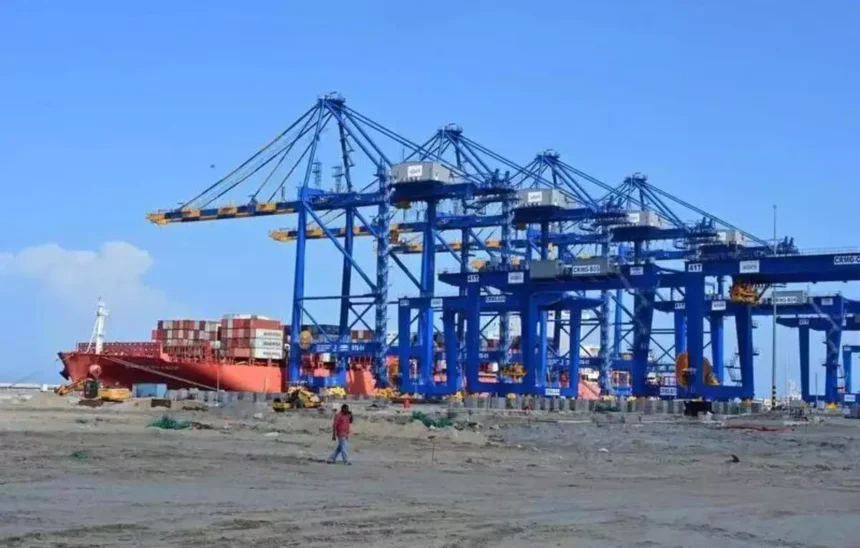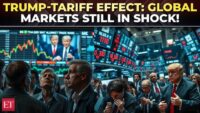India’s inward trade policies may shield it from global economic turbulence—but at what long-term cost?
India’s protectionist trade approach may offer short-term resilience against global tariff slowdowns, but economists warn against complacency.
India’s Insular Trade Policy Faces Global Test
As the world economy enters a fresh phase of uncertainty, India’s historically cautious trade stance could act as a buffer against shocks that could rattle more export-dependent nations.
India’s trade share remains modest despite being the world’s fifth-largest and fastest-growing major economy. Its exports account for less than 2% of global trade. But that very detachment may now be playing to its advantage.
“India’s lower exposure to global goods trade could work in our favour,” said Dr Rajeswari Sengupta, economist at the Indira Gandhi Institute of Development Research. “If export-driven economies slow under tariff pressure and we maintain 6% growth, we’ll appear stronger by comparison.”
Her comments come as former US President Donald Trump pauses his aggressive tariff rhetoric with a 90-day freeze, sending ripples through global markets. Many countries are scrambling to realign supply chains. India, however, appears better insulated due to its vast domestic market and inward-looking trade policy.

A History of Trade Protectionism
India’s complicated relationship with trade liberalisation has deep historical roots.
According to economist Prof Arvind Panagariya’s book India’s Trade Policy: The 1990s and Beyond, India leaned heavily on import substitution from the 1940s to the early 1990s. While Asian economies like South Korea and Singapore pursued aggressive export-led growth, India tightened import controls and licensing, causing its share of imports to fall drastically.
By 1969–70, imports as a share of GDP shrank to just 4%, and consumer goods were effectively banned. The result: a stifled manufacturing base and stagnant exports.
Only in 1991, amid a balance-of-payments crisis, did India begin loosening its trade restrictions. The World Trade Organization (WTO) later compelled the country to end import licensing by 2001. Subsequently, export volumes surged—from $75 billion in 2002 to over $400 billion a decade later.
“India’s per capita income rose more in the first 17 years of this century than it did throughout the entire 20th,” Panagariya notes.
Reversals and Missed Opportunities
Despite early gains, India’s trade openness has been rolled back multiple times—first in 1996–97 and more recently since 2018. Policymakers have relied increasingly on anti-dumping measures, prompting criticism from economists.
“Many post-colonial states like India still see trade as a new form of colonisation,” says Prof Vivek Dehejia of Carleton University, Canada. “This mindset persists—and that’s a shame.”
These inward shifts have hampered India’s Make in India initiative, launched by Prime Minister Narendra Modi. While the programme aimed to bolster technology and capital-intensive sectors, labour-driven industries like textiles were sidelined.
“If foreigners cannot sell their goods to us, they won’t have revenues to buy ours,” Prof Panagariya wrote in a critique of protectionist policies.
Cronyism and Market Power Concerns
Trade protectionism has also created fertile ground for monopolistic practices, warn economists.
“Tariffs have allowed cosy incumbents to build concentrated market positions without needing to invest in efficiency,” said Viral Acharya of NYU’s Stern School of Business.
High tariffs and limited import competition have led to crony capitalism in several sectors. Companies gain power by shielding themselves from global rivals rather than competing on innovation or price.

Global Trade Shifts Present Opportunity
With the US turning inward and China facing external pressure, the European Union and other major markets seek stable partners. India stands to benefit if it acts.
The Global Trade Research Initiative (GTRI) estimates that should Trump resume tariffs after the 90-day pause, India could see a 6.4% ($7.76bn) fall in exports to the US. India exported $89 billion of goods to the American market in 2024 alone.
“Trump’s tariffs could deliver a mild blow to India’s merchandise exports,” says Ajay Srivastava of GTRI. “The solution lies in broadening our trade base.”
This includes:
-
Fast-tracking free trade agreements with the EU, UK, and Canada
-
Strengthening ties with ASEAN, China, Japan, and Russia
-
Improving domestic trade systems (GST simplification, tariff rationalisation)
-
Supporting MSMEs in labour-intensive sectors like garments, toys, and textiles
India exported nearly $12bn in gold jewellery and diamonds to the US in 2024, proving its potential when market access is granted.
Shield or Shackle?
India’s relative insulation from global trade shocks is currently working in its favour, but experts warn this short-term gain should not justify long-term insularity.
To leverage global realignments and attract new trade partnerships, India must:
-
Lower tariff barriers
-
Simplify trade procedures
-
Foster export competitiveness
-
Rebuild trust in international commerce
A shift in strategy could elevate India from a protected giant to a global trading powerhouse.







